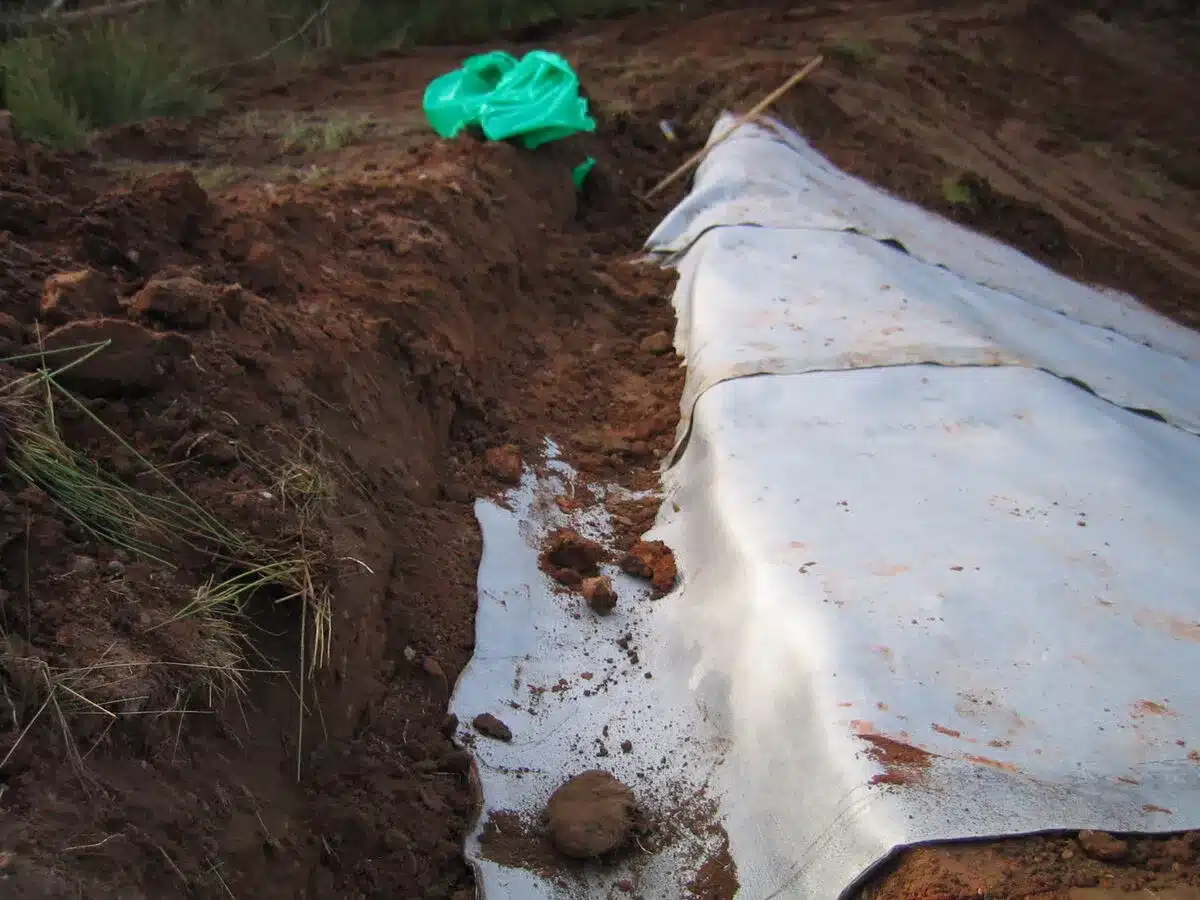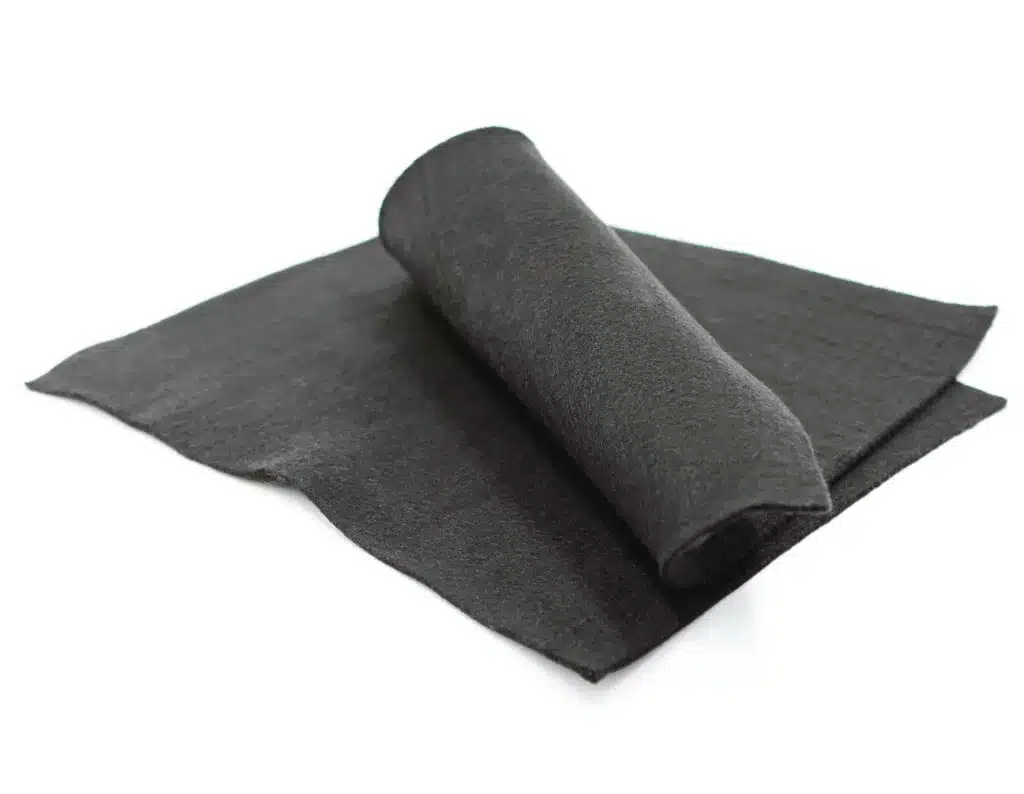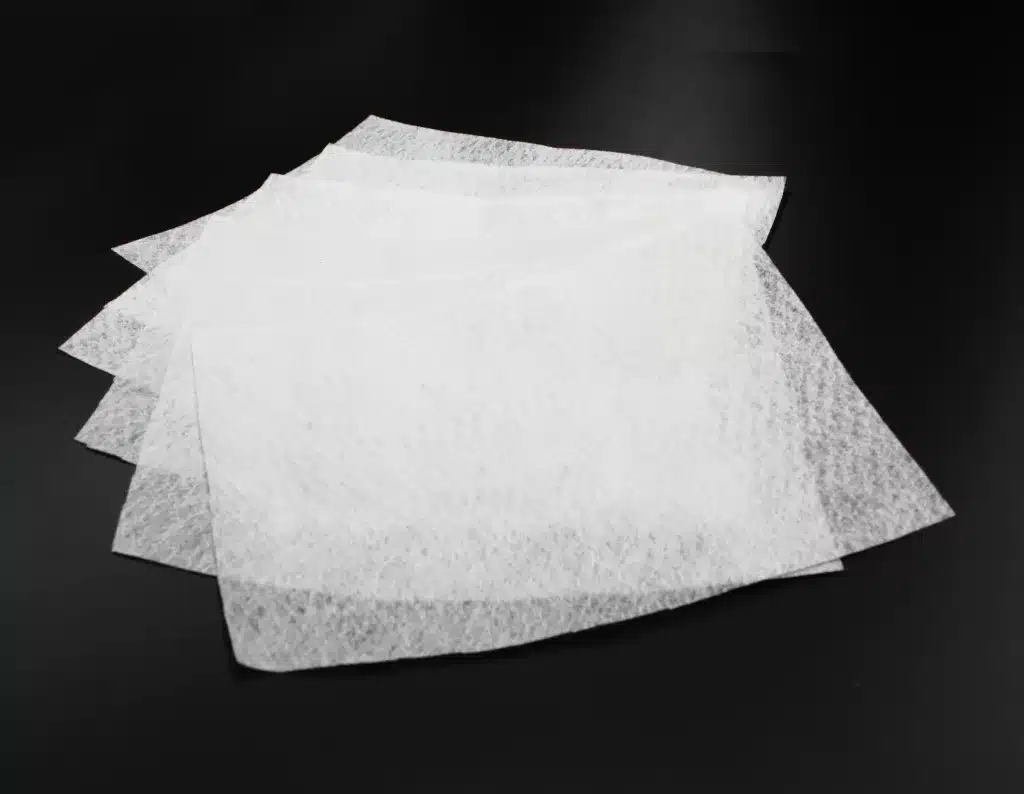+86-159 9860 6917
info@geofantex.com
geofantex@gmail.com
+86-400-8266163-44899
Retaining walls are essential structures for preventing soil erosion and supporting various landscaping projects. One critical element that enhances the performance and longevity of these walls is the use of geotextile fabric. This fabric not only reinforces the retaining wall but also improves drainage, preventing water accumulation behind the structure. In this article, we’ll explore how geotextile fabric can be used in retaining walls, what the best type of fabric is for this purpose, and how water interacts with geotextile material.
Can geotextile be used in a retaining wall?
Geotextiles are commonly used behind retaining walls for several purposes:
- Separation: They prevent the mixing of backfill material with the native soil, preserving the wall’s structural integrity.
- Filtration: Non-woven geotextiles allow water to pass through while retaining soil particles, reducing pressure buildup and preventing clogging.
- Drainage: They promote the flow of water away from the wall, which helps reduce hydrostatic pressure—a major cause of wall failure.
- Erosion control: Geotextiles help prevent soil loss behind the wall due to water movement.
In short, using geotextile fabric behind a retaining wall enhances drainage, stability, and long-term durability, making it a critical component in most modern retaining wall designs.

What is the best type of geotextile fabric for retaining walls?
Choosing the right geotextile fabric ensures proper drainage, soil stabilization, and long-term wall performance. Key options include:
- Woven Geotextiles:
- Strength: High tensile strength for soil stabilization and reinforcement.
- Drainage: Moderate; mainly used for separation rather than filtration.
- Best Use: Heavy-load walls or unstable soils requiring extra support.
- Non-Woven Geotextiles:
- Strength: Moderate; suitable for standard retaining walls.
- Drainage: High permeability allows water to flow freely, reducing hydrostatic pressure.
- Best Use: Areas with high water flow or where drainage is critical.
- Geogrids (optional):
- Strength: Very high when used in combination with fill layers.
- Drainage: Low if used alone.
- Best Use: Steep slopes or walls requiring soil reinforcement.
Installation Tips: Overlap sheets properly (12–18 inches for non-woven), secure woven fabrics with staples or pins, and ensure geogrids are correctly tensioned. Proper fabric selection and installation maximize stability, drainage, and wall longevity.

Does water penetrate geotextile fabric?
Yes, water can pass through geotextile fabric, but the degree depends on the type of material:
- Non-woven geotextiles: Highly permeable, allowing water to flow freely while filtering out soil particles. Ideal for drainage behind retaining walls and erosion control.
- Woven geotextiles: Less permeable due to their tightly woven structure. Some water passes through, but they are mainly used for soil stabilization and separation rather than drainage.
In short, geotextile fabrics are designed to be water-permeable while retaining soil, which makes them essential in preventing hydrostatic pressure buildup, maintaining wall stability, and supporting proper drainage in retaining wall projects.
How do you use geotextile fabric in a retaining wall?
Geotextile fabric is commonly used in retaining wall construction to enhance the stability and longevity of the wall while also promoting drainage. Here’s how it typically gets used in the process:
- Separation: Geotextile fabric acts as a separator between the soil and the gravel or backfill material behind the retaining wall. This prevents the soil particles from mixing with the drainage gravel, which could clog the drainage system over time. It ensures that the backfill material remains intact and the drainage system works efficiently.
- Drainage: The fabric allows water to pass through it while filtering out fine particles that could clog the drainage system. This helps water to flow behind the wall and prevents hydrostatic pressure buildup, which can otherwise push against the retaining wall and cause failure. The fabric is often laid between the backfill (such as gravel or crushed stone) and the wall, directing water down and away from the base of the wall.
- Reinforcement: In some designs, especially with mechanically stabilized earth (MSE) walls or gravity walls, geotextile fabric can help provide added reinforcement. It can be used to help secure layers of fill material, improving the overall structural integrity of the retaining wall.
Steps to use geotextile fabric in retaining wall construction:
- Excavate: Dig out the trench for the retaining wall and level the base.
- Install Drainage Layer: Lay a layer of gravel or drainage stone at the base of the trench for water to flow through.
- Apply the Geotextile Fabric: Place the geotextile fabric over the gravel or stone layer. Make sure the fabric is wide enough to extend beyond the area where the backfill will be placed, ideally overlapping the sides of the trench.
- Place Backfill: Begin adding your backfill material (gravel, sand, or other materials) in layers, being careful to avoid disturbing the fabric. As you place the backfill, fold or wrap the geotextile fabric over the top of each layer to fully encapsulate the material.
- Compact: Compact each layer of backfill as you go to ensure proper settling and stability.
- Finish the Wall: Continue constructing the wall as planned, ensuring the fabric remains in place as you build up the retaining structure.
By keeping soil and water separated and helping with drainage, geotextile fabric is a key component in preventing retaining wall failure due to shifting soil or water pressure.
Geotextile fabric plays a vital role in retaining walls by providing stability and improving drainage. Non-woven geotextiles are the best choice due to their permeability and durability. Water can pass through geotextile fabric, preventing hydrostatic pressure while keeping soil intact. Proper installation of geotextile fabric behind the retaining wall enhances the structure’s performance, making it a reliable solution for long-term landscaping and erosion control projects.



Get Free Sample
We’ll respond as soon as possible(within 12 hours)






















